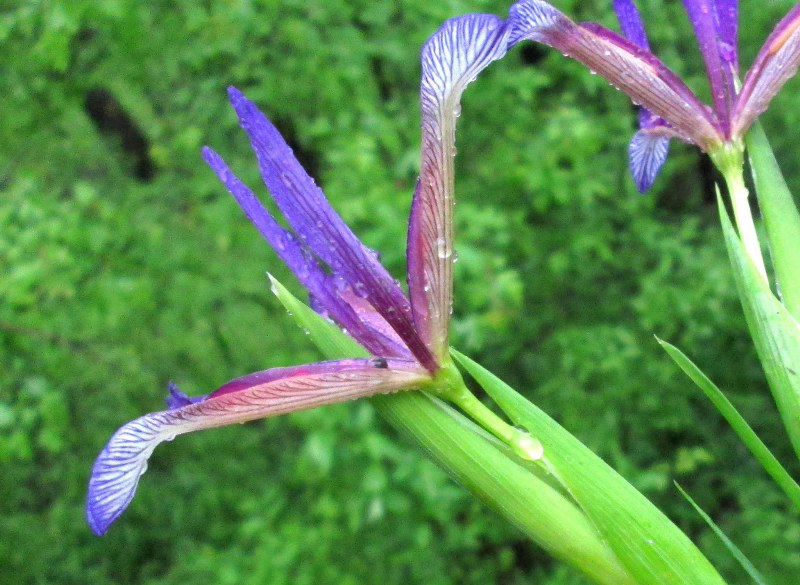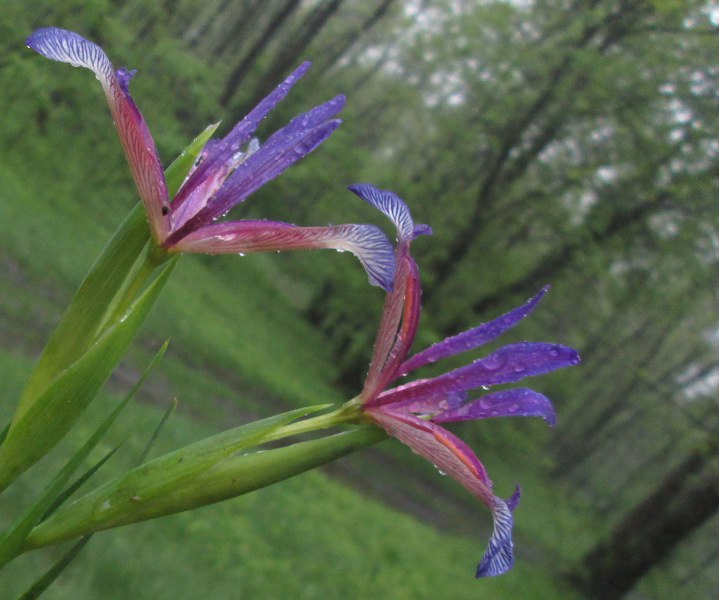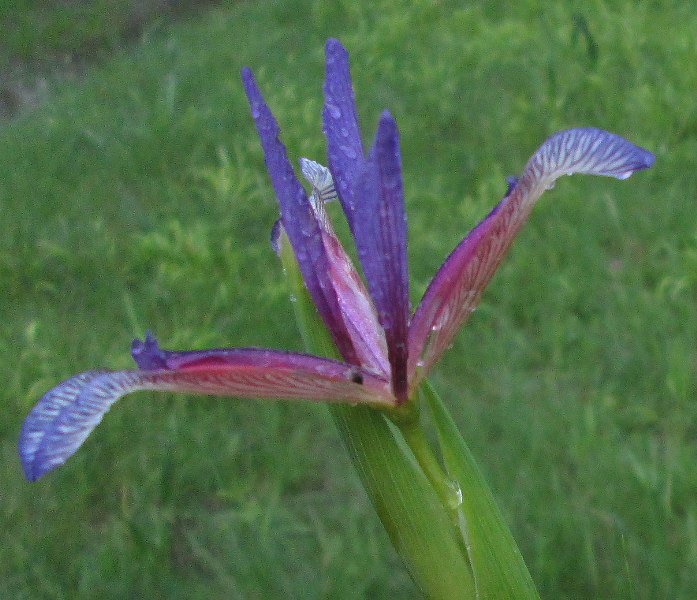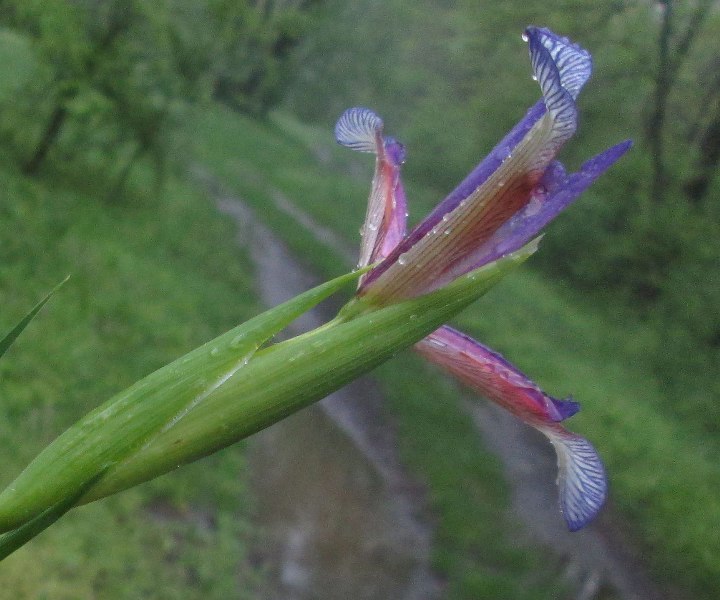home flora of romania endangered species of transylvania endangered habitats of transylvania
Iris brandzae Prodan
|
A narrow endemic of the forest-steppe in the low plains in the eastern part of Romania (subsidence Ploiesti and Siret Plains) and of Moldavian Plain. It occurs also in the low plains from Republic of Moldova.When you see for the first time this species and you are familiar with Iris graminea L. you suddenly realize why the existence of this species was in fact so lately discovered (1935). The Romanian botanists which lived before the author of the species (Iuliu Prodan) knew the populations but they thought it is Iris graminea L. As Iris brandzae Prodan this species is mesophitic - mesohygrophile and they are clearly closely related. The taxon has nothing to do with Iris sintenisii Janka, a mesoxeric forest-steppe species with a range partially overlapping that of Iris brandzae but in very different ecological conditions. The single resemblance between the two species are the narrow mid tepals (the claws) which are narrow. These obvious facts determined the authors of the last Romanian flora books (Ciocarlan 2009, Sarbu, Stefan et Oprea 2013) to reconsider the taxon as an independent species. In regarding the chromosome number 2n=10 this is based on a very old analysis provided by Tarnavschi (1948) and we think it might be incorrect. Iris graminea has 2n=34 and Iris sintenisii 2n=16,32. However if our species is diploid it can be ancestral for the polyploid Iris graminea. Interesting enough, the species is poorly known by European naturalists but frequently cultivated and popular among gardeners in the western United States. The only available images from the internet of this species on 11th of May 2014 were from three gardening websites from western US (see here, here and here). Noticeably the images below are the first ones published on the internet with the species in its native habitat, in Romania. Spătaru forest, Buzau county in the forest-steppe woodland with Fraxinus pallisiae on Gleyc Chernozems (of "lacoviste" type), 26th of April, 2014. dr. Alexandru Badarau, alexandru@transsilvanica.net
|




